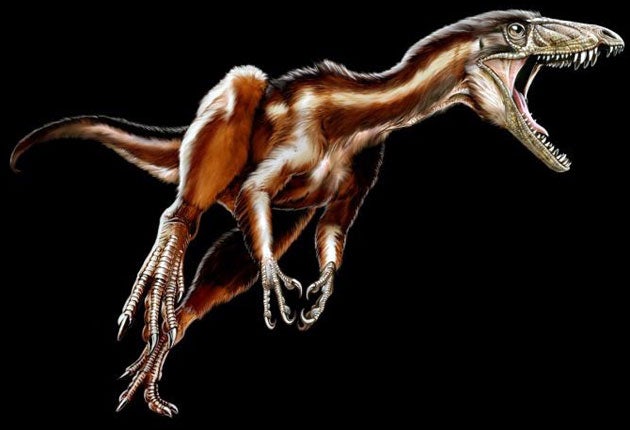Dinosaur fossil fills gaps in evolutionary knowledge

Your support helps us to tell the story
From reproductive rights to climate change to Big Tech, The Independent is on the ground when the story is developing. Whether it's investigating the financials of Elon Musk's pro-Trump PAC or producing our latest documentary, 'The A Word', which shines a light on the American women fighting for reproductive rights, we know how important it is to parse out the facts from the messaging.
At such a critical moment in US history, we need reporters on the ground. Your donation allows us to keep sending journalists to speak to both sides of the story.
The Independent is trusted by Americans across the entire political spectrum. And unlike many other quality news outlets, we choose not to lock Americans out of our reporting and analysis with paywalls. We believe quality journalism should be available to everyone, paid for by those who can afford it.
Your support makes all the difference.Scientists have unearthed the fossilised bones of a meat-eating dinosaur the size of a large dog which they said could fill in the gaps about the early evolution and global migration of a group of animals that dominated the land for 170 million years.
The dinosaur, called Tawa hallae, lived about 230 million years ago and was found in a quarry in northern New Mexico. It possess anatomical features that link it with other dinosaurs living much further south in what is now South America. Researchers said that Tawa supports the idea that the dinosaur lineage evolved in the southern part of the supercontinent Pangea. Successive waves of migration from that region resulted in a diverse variety of dinosaurs spreading to other parts of the giant continent, which later split into several separate continents.
Sterling Nesbitt of the American Museum of Natural History said that the discovery of Tawa, along with other two-legged, meat-eating therapod dinosaurs in the same quarry, suggests that dinosaurs did not evolve in the part of Pangea that became North America but that they had migrated there from the south. "We would expect that all of the therapod dinosaurs found in the quarry were related to each other. But they are not. Tawa and two other carnivorous dinosaurs from North America each have their closest relatives in South America," Dr Nesbitt said.
"If you have continents splitting, you get isolation. So when barriers develop, you would expect that multiple carnivorous dinosaurs in a region should represent a closely-related endemic radiation. But that is what we don't see in early dinosaur evolution," he said.
The research team found three distinct carnivorous species of dinosaurs in the New Mexico quarry. "When we analysed the evolutionary relationships of these dinosaurs, we discovered that they were only distantly related, and that each species had close relatives in South America," Dr Nesbitt said.
"This implies that each carnivorous dinosaur species descended from a separate lineage before arriving in North America, instead of all evolving from a local ancestor," he said.
Tawa is one of the oldest dinoaurs to be unearthed, but it is exceptionally well-preserved for its age. The study, published in the journal Science, found that it possess rudimentary air-sacs in the bones of its neck and an avian-like braincase, features that were thought to have evolved later when some feathered dinosaurs diverged into birds.
Join our commenting forum
Join thought-provoking conversations, follow other Independent readers and see their replies
Comments